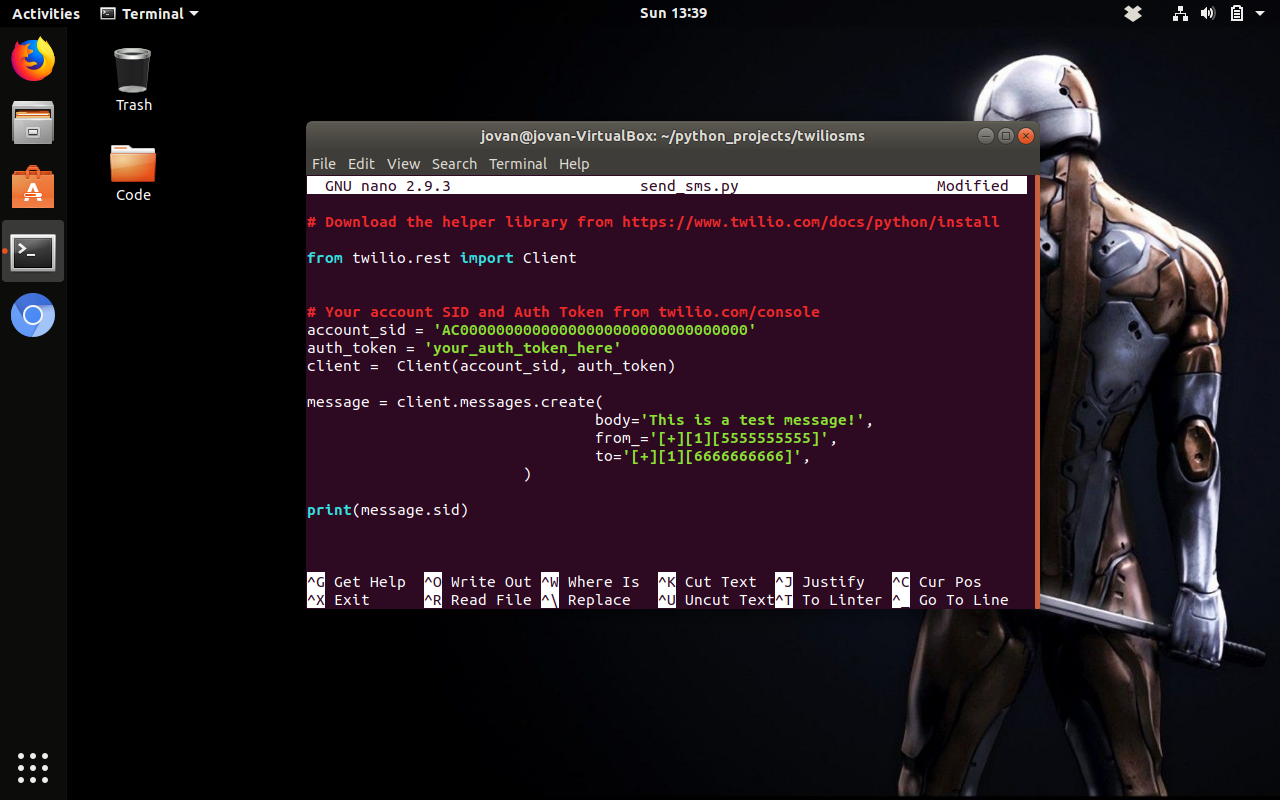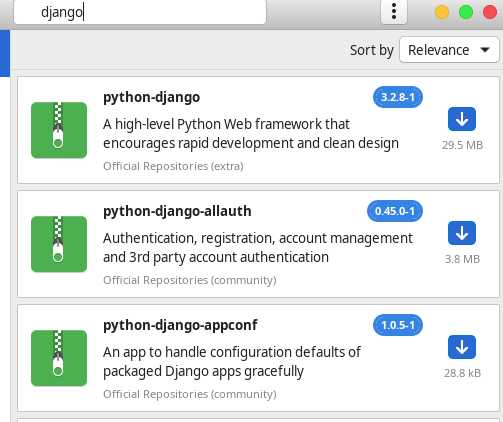

- #AUTH FOR PYTHON 3 INSTALL VERIFICATION#
- #AUTH FOR PYTHON 3 INSTALL CODE#
- #AUTH FOR PYTHON 3 INSTALL PASSWORD#
Initial_count – starting counter value, defaults to None. Secret – the hotp/totp secret used to generate the URI
#AUTH FOR PYTHON 3 INSTALL CODE#
This can then be encoded in a QR Code and used to provision the Google Returns the provisioning URI for the OTP works for either TOTP or HOTP. build_uri ( secret: str, name: str, initial_count: Optional = None, issuer: Optional = None, algorithm: Optional = None, digits: Optional = None, period: Optional = None, image: Optional = None ) → str ¶ Verifies the OTP passed in against the current counter OTP. Provisioning URI verify ( otp: str, counter: int ) → bool ¶ Organization title of the OTP entry in Authenticator Issuer_name – the name of the OTP issuer this will be the Initial_count – starting HMAC counter value, defaults to 0


OTP provisioning_uri ( name: Optional = None, initial_count: Optional = None, issuer_name: Optional = None, image: Optional = None ) → str ¶ HOTP ( s: str, digits: int = 6, digest: Any =, name: Optional = None, issuer: Optional = None, initial_count: int = 0 ) ¶
#AUTH FOR PYTHON 3 INSTALL VERIFICATION#
True if verification succeeded, False otherwise class pyotp.hotp. Valid_window – extends the validity to this many counter ticks before and after the current one

Parametersįor_time – Time to check OTP at (defaults to now) Verifies the OTP passed in against the current time OTP. verify ( otp: str, for_time: Optional = None, valid_window: int = 0 ) → bool ¶ timecode ( for_time: datetime.datetime ) → int ¶Īccepts either a timezone naive ( for_time.tzinfo is None) orĪ timezone aware datetime as argument and returns theĬorresponding counter value (timecode). This can then beĮncoded in a QR Code and used to provision an OTP app like Returns the provisioning URI for the OTP. OTP value provisioning_uri ( name: Optional = None, issuer_name: Optional = None, image: Optional = None ) → str ¶ interval Parametersįor_time – the time to generate an OTP forĬounter_offset – the amount of ticks to add to the time counter NIST SP 800-63-3: Digital Authentication Guideline for a high level overview of We also recommend that implementers read the One implementation ofįIDO U2F/WebAuthn is PyOTP’s sister project, PyWARP. Relying party IDs (application origin/domain names), U2F adds protection against phishing attacks. And by automating scoping of credentials to Hardware U2F also sequesters the client secret in a dedicated single-purposeĭevice, which strengthens your clients against client-side attacks. MFA solution against server-side attacks. U2F uses asymmetric cryptography to avoid using a shared secret design, which strengthens your When implementing a “greenfield” application, consider supportingĪddition to HOTP/TOTP. Throttle brute-force attacks against your application’s login functionality Recently authenticated timestamp, OTP, or hash of the OTP in your database, and rejecting the OTP when a match is seen) Minimum, application implementers should follow this checklist:Įnsure transport confidentiality by using HTTPSĮnsure HOTP/TOTP secret confidentiality by storing secrets in a controlled access databaseĭeny replay attacks by rejecting one-time passwords that have been used by the client (this requires storing the most Implementers should read and follow the HOTP security requirementsĪnd TOTP security considerations sections of the relevant RFCs. Users can set up auth tokens in their apps easily by using their phone camera to scan otpauth:// QR codes provided by PyOTP. Sending authentication codes to users over SMS or email (HOTP) or, for TOTP, by instructing users to use GoogleĬompatible app. PyOTP implements server-side support for both of these standards.
#AUTH FOR PYTHON 3 INSTALL PASSWORD#
Password Algorithm) and in RFC 6238 (TOTP: Time-Based One-Time PasswordĪlgorithm). Open MFA standards are defined in RFC 4226 (HOTP: An HMAC-Based One-Time Or multi-factor (MFA) authentication methods in web applications and in other systems that require users to log in. It can be used to implement two-factor (2FA) PyOTP is a Python library for generating and verifying one-time passwords. PyOTP - The Python One-Time Password Library ¶


 0 kommentar(er)
0 kommentar(er)
